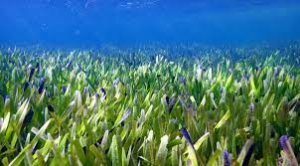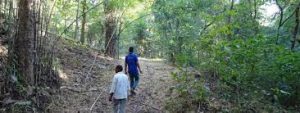Today Current Affairs:6th June 2022 for UPSC IAS exams, State PSC exams, SSC CGL, State SSC, RRB, Railways, Banking Exam & IBPS, etc
Table of Contents
Operation Mahila Suraksha:

Under the Operation Mahila Suraksha, Railway Protection Force (RPF) has arrested more than 7000 persons who were traveling unauthorizedly in the coaches reserved for women.
- RPF also rescued girls/women from becoming the victims of human trafficking (Operation AAHT).
Operation Mahila Suraksha:
- The pan-India drive “Operation Mahila Suraksha” was launched from 3rd to 31st May 2022 to ensure women’s security.
- Other Such Operation: With an objective of providing enhanced safety and security to lady passengers travelling by trains for their entire journey a pan India initiative “Meri Saheli” is also operational.
- Indian Railways has launched “Meri Saheli” initiative for focused action on security of women across all zones with an objective to provide safety and security to lady passengers travelling by trains for their entire journey from starting station to destination station.
Platygomphus Benritarum : A New Species Of Dragonfly

A new species of dragonfly ‘Platygomphus benritarum’ discovered in Assam has been named after two women for their pioneering work in the northeast.
- It has been named after Monisha Behal, a founder member of Northeast Network (NEN) and Rita Banerji, founder of Green Hub.
- The species, a single male, was found by two researchers in June 2020 near the banks of the Brahmaputra in Assam.
- The male observed appeared to have freshly emerged judging by its shiny wings and abdomen.
- It has turquoise blue eyes and dark brown face covered with hair on the sides, was found resting on a large tree around 5-6 metres from the banks of Brahmaputra.
- The habitat along the banks is dominated by grasses, sparse trees, paddy fields and marshlands, along with some forest patches and tree plantations.
- Dragonflies and damselflies belong to the order Odonata of insects.
- The order Odonata (“toothed ones”) includes some of the most ancient and beautiful insects that ever roamed Earth, as well as some of the largest flying invertebrates ever to have lived.
- Odonata consists of three groups: Anisoptera (which includes dragonflies), Zygoptera (which includes damselflies), and Anisozygoptera (a relict group represented by only two living species).
Barcodes Vs Radio-Frequency Identification Tags:

Baggage tags equipped with radio-frequency identification (RFID) will soon be available at Delhi’s Indira Gandhi International Airport, marking a first of its kind for the country.
- Radio-frequency identification (RFID) is a technology that uses radio waves to automatically identify various tagged objects. Radio Frequency Identification (RFID) is a wireless tracking method that uses tags and readers to track objects.
- Transponder, receiver, and transmitter are the three components of an RFID system.
- The RFID reader continually sends radio waves of a specific frequency in RFID system. If the object to which the RFID tag is attached is within the range of the radio waves, it provides feedback to the RFID reader, which then identifies the object based on the feedback.
Radio-frequency identification (RFID) technology Vs barcodes
- RFID uses radio waves to communicate data from RFID chips to readers that do not require line of sight in order to obtain the data, whereas barcodes use light to read the black-and-white pattern printed on the sticky tag.
- An RFID tag can communicate with a powered reader even when the tag is not powered.
- When printed on paper or sticky labels, barcodes are more susceptible to wear and breakage, which can affect their readability.
- RFID tags, on the other hand, are sometimes placed in plastic labels or into the object itself, making them more durable than barcodes.
- In contrast to barcode scanners, RFID scanners can process dozens of tags in a single second.
- Also, barcodes are simple and easy to copy or counterfeit, whereas RFID is more complicated and difficult to replicate or counterfeit.
- Unlike barcodes, which must in line of sight, RFID tags need not be.
- Also, RFID tags are expensive compared to barcodes.
What Is a Green Bond?

India is likely to face an uphill battle if it goes ahead with its first sovereign green bond sale as it aims to issue the securities in rupees, putting off most overseas investors.
- The timing might not be ideal for India though, especially for a rupee issuance.
- The currency has slumped more than 4% this year amid concern the Reserve Bank of India is behind the curve in tackling inflation, with elevated crude oil prices adding to pressures on the net importer.
- A green bond is a type of fixed-income instrument that is specifically earmarked to raise money for climate and environmental projects.
- These bonds are typically asset-linked and backed by the issuing entity’s balance sheet, so they usually carry the same credit rating as their issuers’ other debt obligations.
- Green bonds may come with tax incentives to enhance their attractiveness to investors.
- The World Bank is a major issuer of green bonds.
- Green bonds work just like any other corporate or government bond.
- Borrowers issue these securities in order to secure financing for projects that will have a positive environmental impact, such as ecosystem restoration or reducing pollution.
- Investors who purchase these bonds can expect to make as the bond matures.
- In addition, there are often tax benefits for investing in green bonds.
Martin Ennals Award:

This year it was awarded posthumously to pay homage to Father Stan Swamy, a Jesuit priest and tribal rights activist from Jharkhand who had been arrested in the Bhima Koregaon case.
- Given by the Martin Ennals Foundation, based in Geneva, Switzerland.
- It is regarded as the Nobel Prize for human rights defenders.
- Ennals was a British activist who spent his life working to secure human rights across the world.
- He was Secretary-General of Amnesty International from 1968 to 1980.
- Ennals also co-founded several organisations, such as Article 19, International Alert and Huridocs and formed “the binding force between them”.
World Environment Day 2022 : Theme

World Environment Day is being celebrated across the globe on June 5, 2022.
- The day is observed to raise global awareness to take positive environmental action to protect nature and the planet Earth.
- It is observed on 5th of June every year since 1973 as part of the United Nations Environment Programme to build awareness to save life on planet Earth.
- World Environment Day was established in 1972 by the United Nations at the Stockholm Conference on the Human Environment ( 5–16 June 1972), that had resulted from discussions on the integration of human interactions and the environment.
- The theme of this year’s World Environment Day is – only one Earth.
- “Only One Earth” was also the slogan for the first United Nations Conference on the Human Environment, held in Stockholm in 1972.
‘Save Soil Movement’ in New Delhi on the occasion of World Environment Day:
- Prime Minister Narendra Modi will attend a programme on ‘Save Soil Movement’ in New Delhi on the occasion of World Environment Day.
- Save Soil Movement is a global movement to increase awareness about deteriorating soil health and bring about a conscious response to improve soil.
- The movement was started by Sadhguru in March this year, who embarked on a 100-day motorcycle journey passing through 27 countries.
- The Save Soil movement strives to rally the environmentally-conscious around soil conservation, advocating the power of individual actions for policy change and public engagement.
- Prime Minister’s participation in the programme will be reflective of the shared concerns and commitment towards improving the health of soil in the country.
Prime Minister Narendra Modi will launch a global initiative ‘Lifestyle for the Environment (LiFE) Movement, on the occasion of World Environment Day:
- The launch will initiate ‘LiFE Global Call for Papers’ inviting ideas and suggestions from academics, universities & research institutions etc to influence and persuade individuals, communities and organisations across the world to adopt an environment conscious lifestyle.
- The idea of LiFE was introduced by the Prime Minister during the 26th United Nations Climate Change Conference of the Parties COP-26 in Glasgow last year.
- The idea promotes an environment-conscious lifestyle that focuses on mindful and deliberate utilisation instead of mindless and destructive consumption.
Clean and Green’ campaign on World Environment Day.:
- The Ministry of Housing and Urban Affairs will launch a ‘Clean and Green’ campaign on World Environment Day.
- Under this campaign, Urban Local Bodies across the country will hold awareness programmes to free the country from single-use plastic and contribute to improve the environment.
- The Ministry also has issued a detailed advisory to State and Union Territories in this direction.
- In the advisory, the Ministry has instructed to ban Single-Use Plastic by 30th of June.
- The Ministry further said that States and Urban Local Bodies have to enter into Memorandum of Understanding with nearby cement plants or other industrial units.
- It also directed to ensure that a part of the plastic waste generated is used either as an alternative fuel in cement plants, or for road construction purposes.
- The advisory stresses on large-scale people participation to carry forward the message of Single-Use Plastics ban and enforcement.
Gait Analysis:

Among the evidence relied upon by a special court in Mumbai while giving the death sentence to a 44-year-old man for the rape and murder of a woman in the Saki Naka area of the city, is a “gait analysis” report.
- Gait is defined as a manner of walking or moving on foot.
- Gait analysis is a technique in podiatry medical care and the treatment of the foot, which is used to evaluate and diagnose conditions that affect walking and posture.
- The analysis can help experts zero in on the source of an injury or pain that determines the way in which an individual stands or walks.
- It can also be used by physiotherapists for treatment, and in athletics training so that athletes can perform better and in greater comfort.
- Gait analysis techniques have now been borrowed by forensic sciences experts to identify suspects in criminal cases.
- With footage from CCTV cameras becoming a crucial element in fighting and preventing a range of crimes especially in the cities, gait analysis has begun to be used as a tool for focusing on or eliminating individuals from a list of suspects.
Turkey Will Now Be Known As Türkiye:

Turkey will now be known as Türkiye at the United Nations, after the intergovernmental body agreed to a formal request for the name change from Ankara.
- Domestically, citizens refer to the land as Turkiye, but its anglicised version ‘Turkey’ was adopted internationally following the country’s independence in 1923.
- Apparently, the country’s government was not pleased with the Google search results that came up for the word ‘Turkey’. Some of these results included the large bird that is served for Thanksgiving and Christmas meals in North America.
- The government has also had objections to Cambridge Dictionary’s definition of the term “turkey”; “something that fails badly” or “a stupid or silly person”.
- There are other countries that have changed their names either to drop colonial legacies or rebrand, as is the case with Turkey. Some examples include
- The Netherlands, which was changed from Holland;
- Macedonia, which changed its name to North Macedonia due to political disputes with Greece;
- Iran, which changed its name from Persia in 1935;
- Siam, which changed its name to Thailand; and
- Rhodesia, which changed to Zimbabwe to drop its colonial legacy.
Posidonia australis (The ribbon weed) : World’s Largest Plant

The world’s largest plant has recently been discovered off the West Coast of Australia: a seagrass 180 km in length.
- The ribbon weed, or Posidonia australis, has been discovered in Shark Bay by a group of researchers from Flinders University and The University of Western Australia.
- These researchers have also found that the plant is 4,500 years old, is sterile, has double the number of chromosomes than other similar plants, and has managed to survive the volatile atmosphere of the shallow Shark Bay.
- The ribbon weed covers an area of 20,000 hectares. The second largest plant, is the clonal colony of a quaking Aspen tree in Utah, which covers 43.6 hectares.
- The largest tree in India, the Great Banyan in Howrah’s Botanical Garden, covers 1.41 hectares.
Puneet Sagar Abhiyan:

National Cadet Corps (NCC) has launched the latest phase of its nationwide flagship campaign ‘Puneet Sagar Abhiyan’ on 30 May 2022 and it will continue till 5th June 2022, the World Environment Day.
- Puneet Sagar Abhiyan was launched by NCC to clean Sea Shores/Beaches and other water bodies including rivers & lakes, of plastic & other waste and increase awareness amongst the local population about importance of keeping the beaches and river fronts clean.
- The purpose of the Abhiyan is to educate locals and sensitise them about ‘Swachh Bharat’.
- About 74,000 cadets from 10 States and 4 Union Territories will participate in the campaign during this phase.
- The NCC cadets shall also be joined in by NCC Alumni, locals and tourists in several places across the country.
- The waste collected during the campaign will be disposed of in an environment friendly manner in cooperation with Government/Private agencies.
SHRESHTA Scheme:

Union Minister of social Justice and empowerment Dr. Virendra Kumar launched the Scheme “SHRESHTA”-Scheme for residential education for students in High school in Targeted Areas.
- The Scheme will be beneficial for SC students those who could not reach for higher quality education.
- It provides for high quality education for meritorious but poor SC students in CBSE-affiliated reputed residential schools across the country.
- Approximately 3,000 seats are provided each year for admission in class 9th and 11th and the entire cost of the school fee and residential charges are borne by the Department.
- The students, belonging to Scheduled Castes, studying in class 8th and 10th in the current academic year are eligible for availing the benefits of scheme are selected through a transparent mechanism through a National Entrance Test for SHRESHTA (NETS), which is conducted by the National Testing Agency (NTA) for admission in class 9th and 11th.
- Students belonging to marginalized income group within the SC community, whose parental annual income is upto Rs.2.5 Lakh are eligible.
- Successful candidates, after following the e-counselling process, are given admission in the school of their choice anywhere in the Country for their academic persuasion.
- The Department shall bear the total cost of the school fee and hostel charges till completion of their academic upto class 12th.
- There after the students of the scheme may avail benefits of other schemes of the Department for their higher education.
Current State of Water Scarcity:

According to a newly published book, unconventional water sources can help beat global water scarcity.
- The book was compiled by experts at the United Nations University’s Institute for Water, Environment and Health (UNU-INWEH), UNU Institute for Integrated Management of Material Fluxes and of Resources and the UN Food and Agriculture Organisation.
- Conventional water sources which rely on snowfall, rainfall and rivers – are not enough to meet growing freshwater demand in water-scarce areas.
Current State of Water Scarcity:
- Only 3% of the world’s water is freshwater, and two-thirds of that is tucked away in frozen glaciers or otherwise unavailable for our use.
- As many as 87 countries are projected to become water-scarce by 2050.
- One in four people on Earth face shortages of water for drinking, sanitation, agriculture and economic development.
- Water scarcity is expected to intensify in regions like the Middle East and North Africa region, which has 6% of the global population but only 1% of the world’s freshwater resources.
- India: Although India has 16% of the world’s population, the country possesses only 4% of the world’s freshwater resources.
- In recent times, the water crisis in India has become very critical, affecting millions of people across India.
- As many as 256 of 700 districts in India have reported ‘critical’ or ‘overexploited’ groundwater levels according to the most recent Central Ground Water Board data (from 2017).
- Three-fourths of India’s rural families lack access to piped, drinkable water and must rely on unsafe sources.
- India has become the world’s largest extractor of groundwater, accounting for 25% of the total. Some 70% of our water sources are contaminated and our major rivers are dying because of pollution.
SC Judgement On Eco Sensitive Zone:

The Supreme Court directed that every protected forest, national park and wildlife sanctuary across the country should have a mandatory eco-sensitive zone (ESZ) of a minimum one km starting from their demarcated boundaries.
- Environment Ministry guidelines show that the purpose of declaring ESZs around national parks, forests and sanctuaries is to create some kind of a “shock absorber” for the protected areas.
- The judgment observed that the government should not confine its role to that of a “facilitator” of economic activities for the “immediate upliftment of the fortunes of the State”.
- In a series of directions, the court held that in case any national park or protected forest already has a buffer zone extending beyond one km, that would prevail.
- In case the question of the extent of buffer zone was pending a statutory decision, then the court’s direction to maintain the one-km safety zone would be applicable until a final decision is arrived.
- The court directed that “mining within the national parks and wildlife sanctuaries shall not be permitted”.
Eco-Sensitive Zones (ESZs):
- Eco-Sensitive Zones (ESZs) or Ecologically Fragile Areas (EFAs) are areas notified by the MoEFCC around Protected Areas, National Parks and Wildlife Sanctuaries.
- The purpose of declaring ESZs is to create some kind of “shock absorbers” to the protected areas by regulating and managing the activities around such areas.
- They also act as a transition zone from areas of high protection to areas involving lesser protection.
- The Environment (Protection) Act, 1986 does not mention the word “Eco-Sensitive Zones”.
- An ESZ could go up to 10 kilometres around a protected area as provided in the Wildlife Conservation Strategy, 2002.
- Moreover, in the case where sensitive corridors, connectivity and ecologically important patches, crucial for landscape linkage, are beyond 10 km width, these should be included in the ESZs.
- The purpose of declaring ESZs around national parks, forests and sanctuaries is to create some kind of a “shock absorber” for the protected areas.
- These zones would act as a transition zone from areas of high protection to those involving lesser protection.
Community Forest Resource:

Chhattisgarh has become only the second state in the country to recognise Community Forest Resource (CFR) rights of a village inside a Kanger Ghati National Park.
- While CFR rights are an important empowerment tool, getting a consensus amongst various villages about their traditional boundaries often proves a challenge.
- In 2016, the Odisha government was the first to recognise Community Forest Resources (CFRs) inside the Simlipal National Park.
Kanger Ghati National Park:
- Kanger Valley National Park is located in the Bastar district (Near Jagdalpur) of the state of Chhattisgarh.
- The Kanger Valley National park is also known as Kanger Ghati National Park.
- It was declared as a National park in the year of 1982. Total area of the park is about 200 Km2.
- The national Park is situated on the valley of river Kanger. The park derives its name from the Kanger River, which flows throughout its length.
- The Park is a typical mixed humid deciduous type of forest, in which the Sal, Saugaun, teak and bamboo trees are available in abundance.
- The most popular species in this area is Bastar Maina which enchant everyone with their human voice.
Community Forest Resource (CFR)
- It is the common forest land that has been traditionally protected and conserved for sustainable use by a particular community.
- The community uses it to access resources available within the traditional and customary boundary of the village; and for seasonal use of landscape in case of pastoralist communities.
- Each CFR area has a customary boundary with identifiable landmarks recognised by the community and its neighboring villages.
- It may include forest of any category – revenue forest, classified & unclassified forest, deemed forest, District Level Committee (DLC) land, reserve forest, protected forest, sanctuary and national parks etc.




